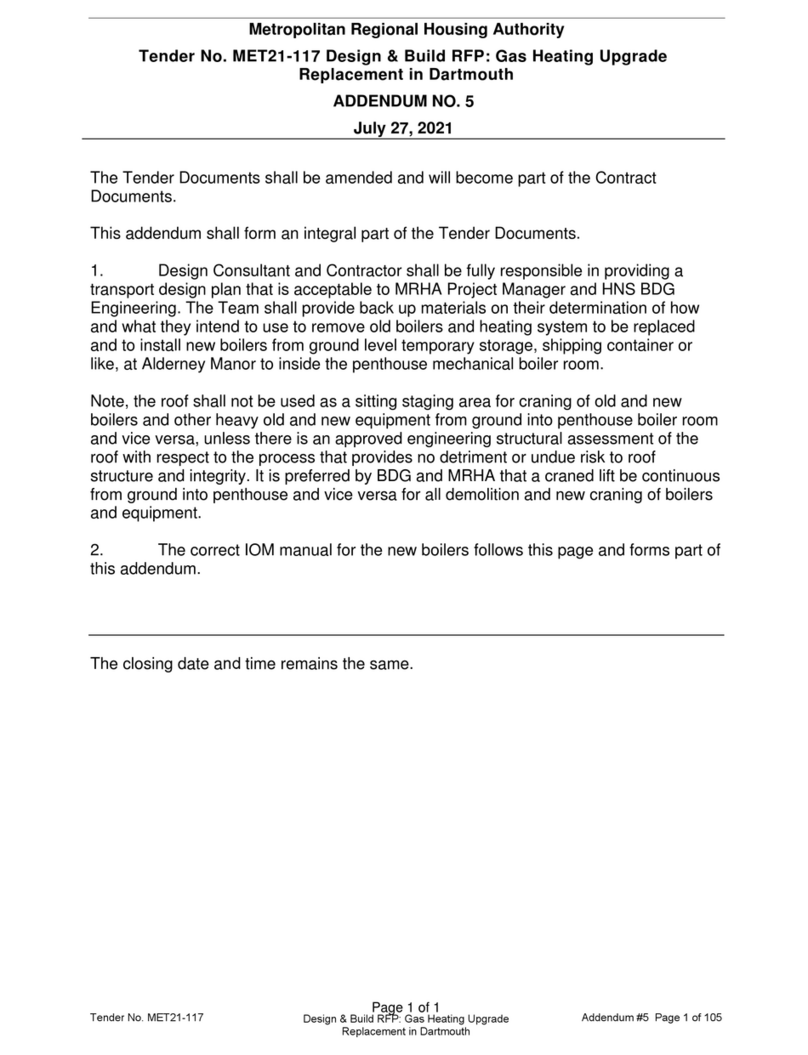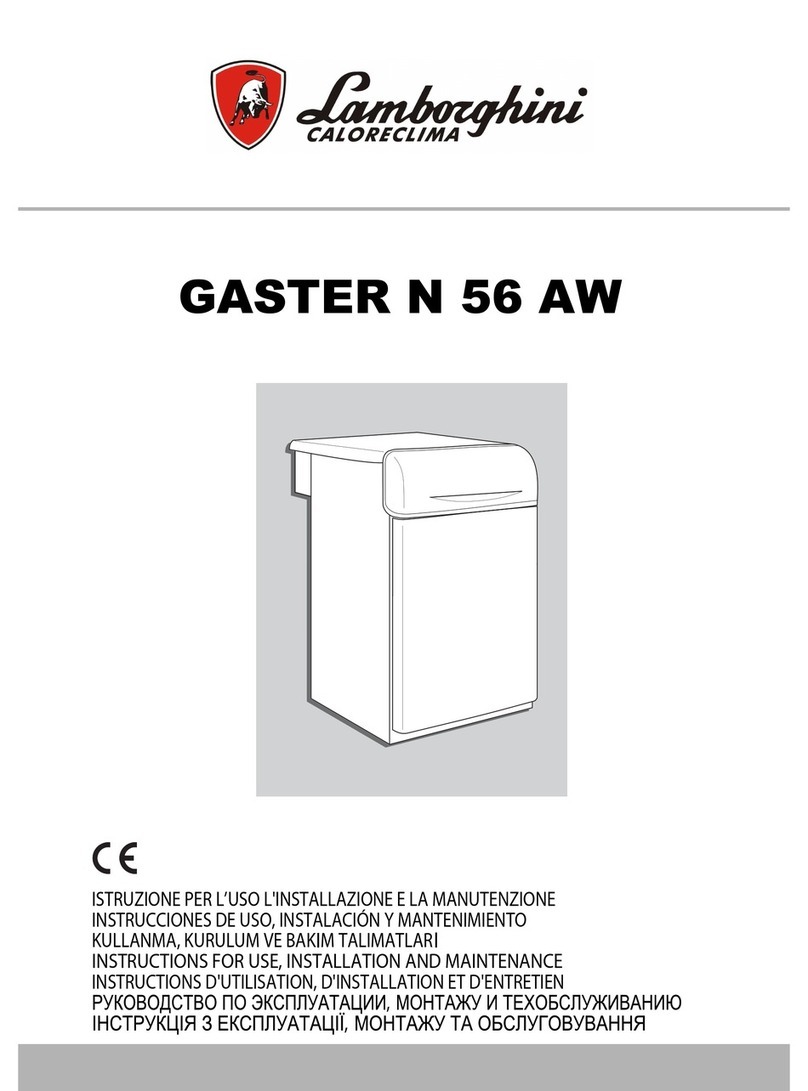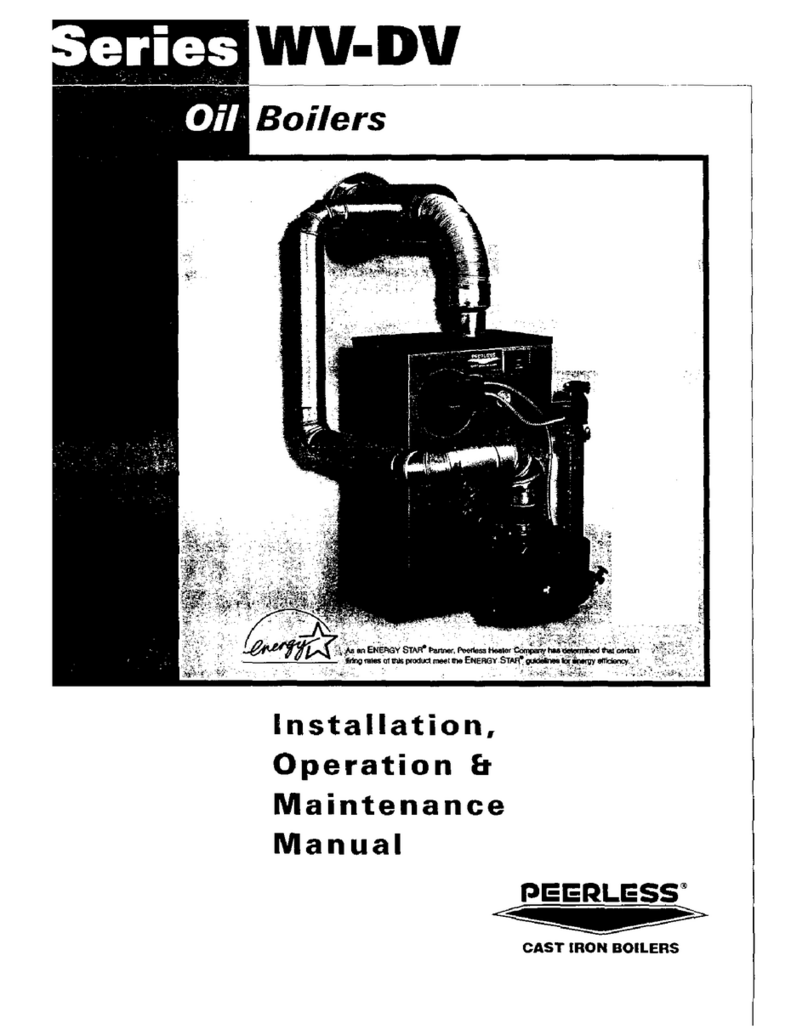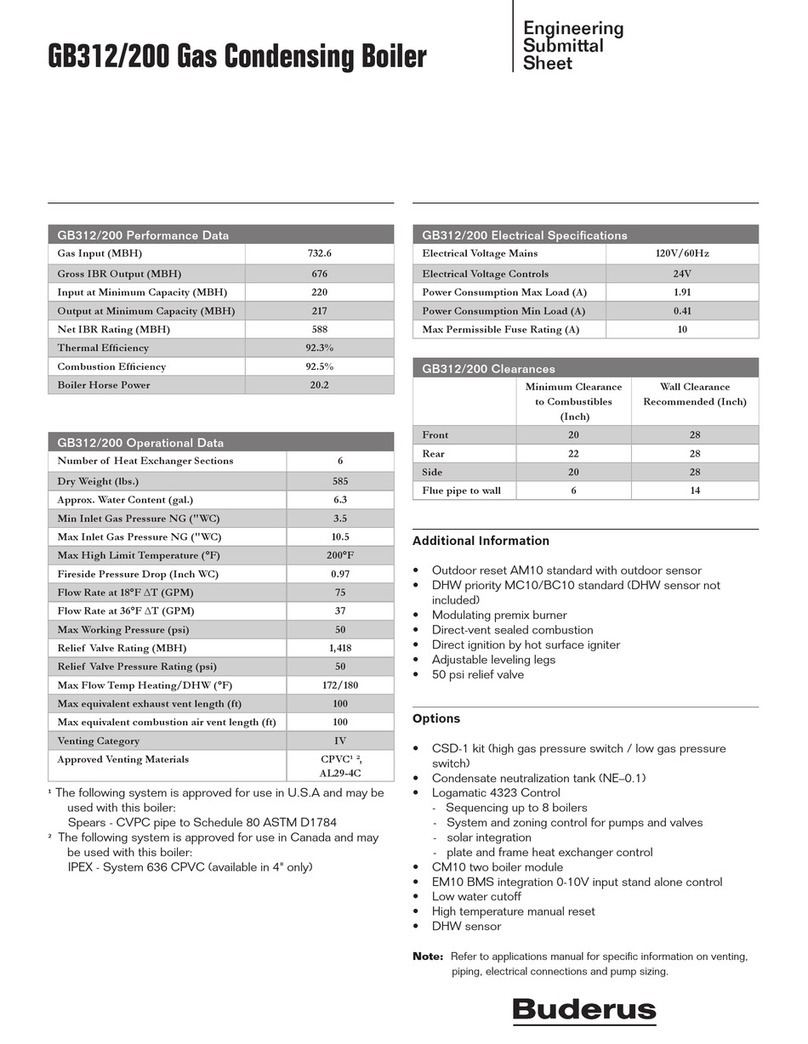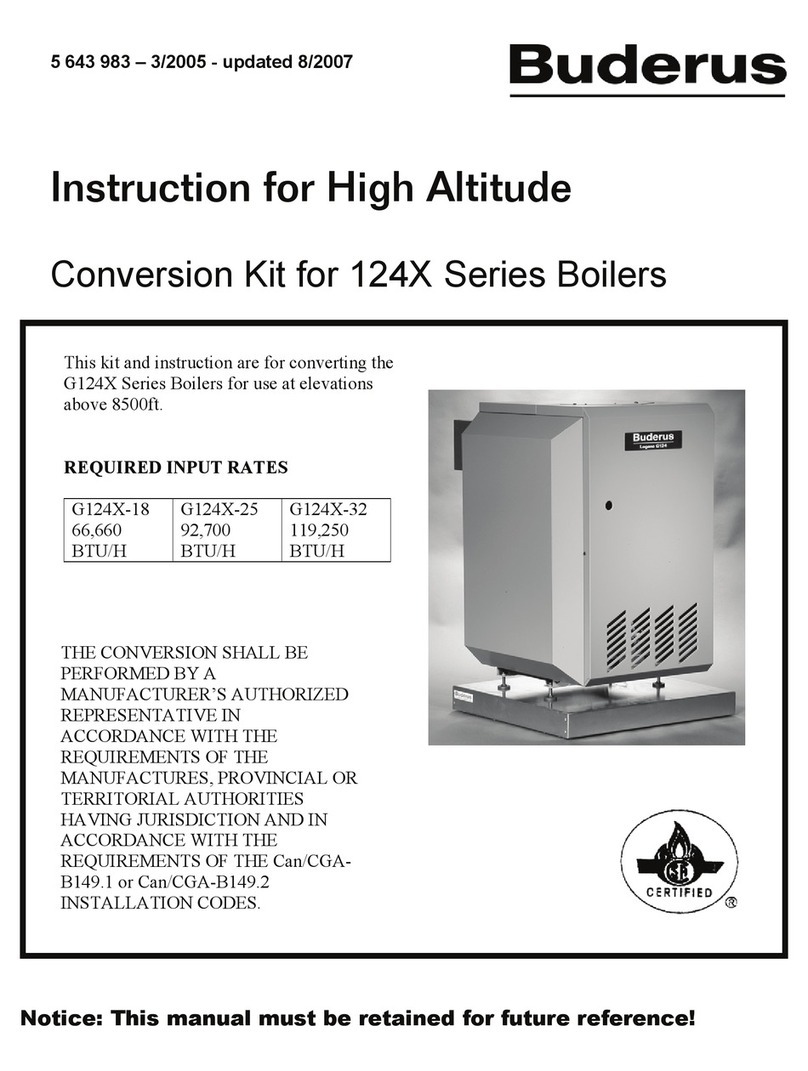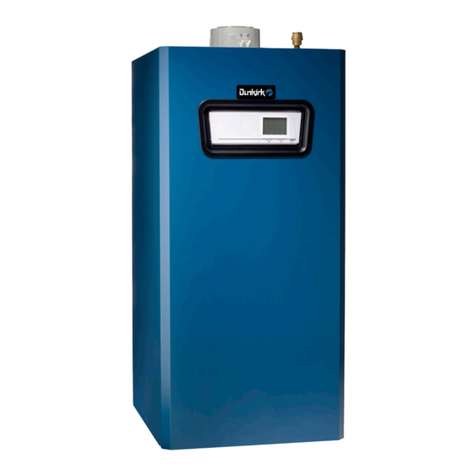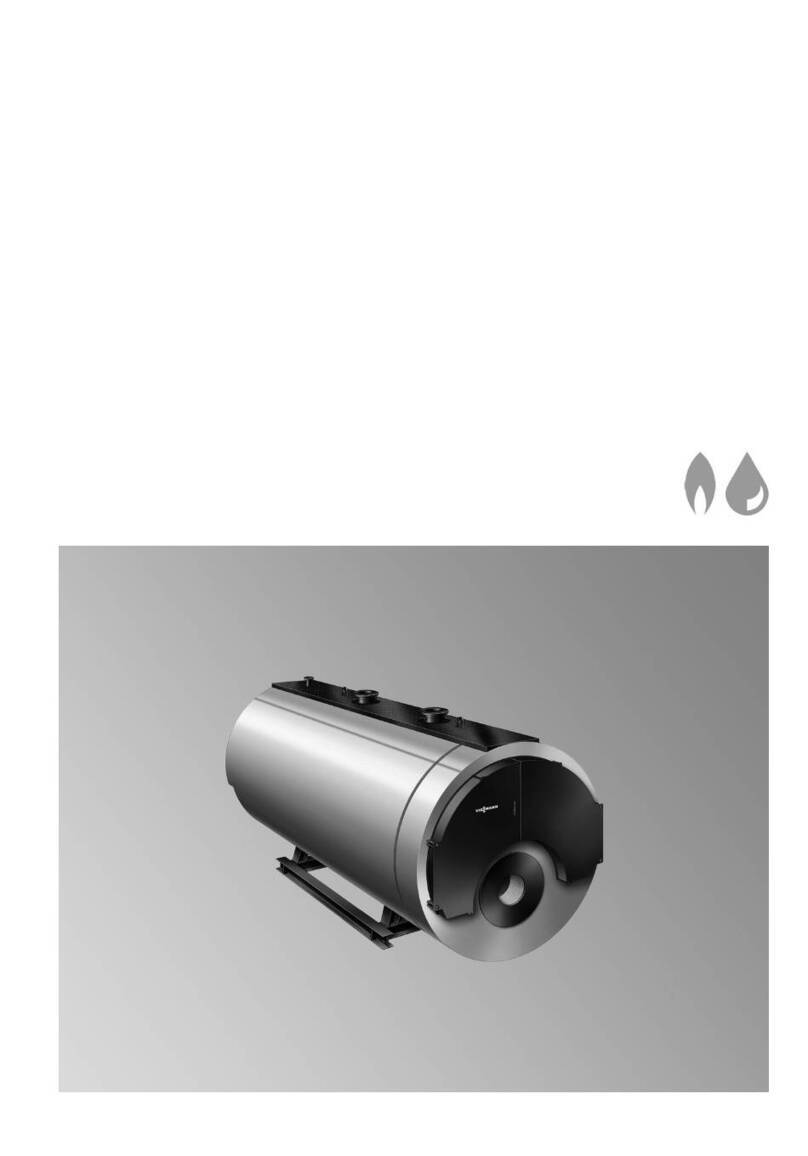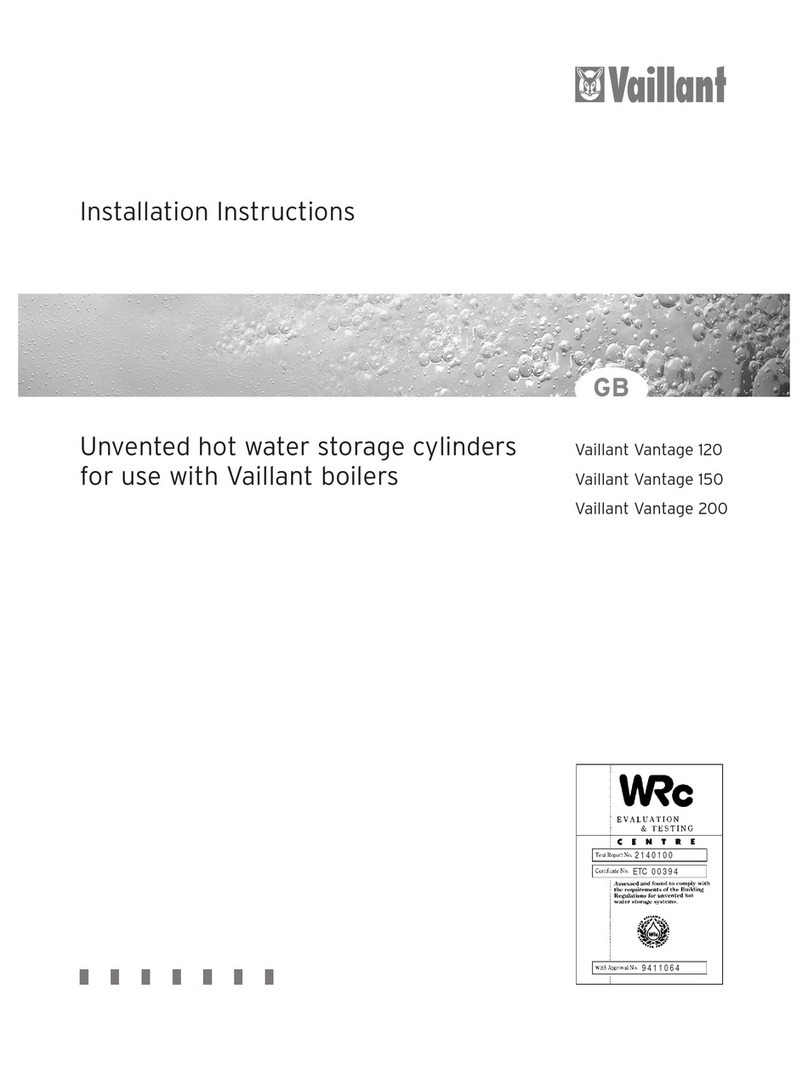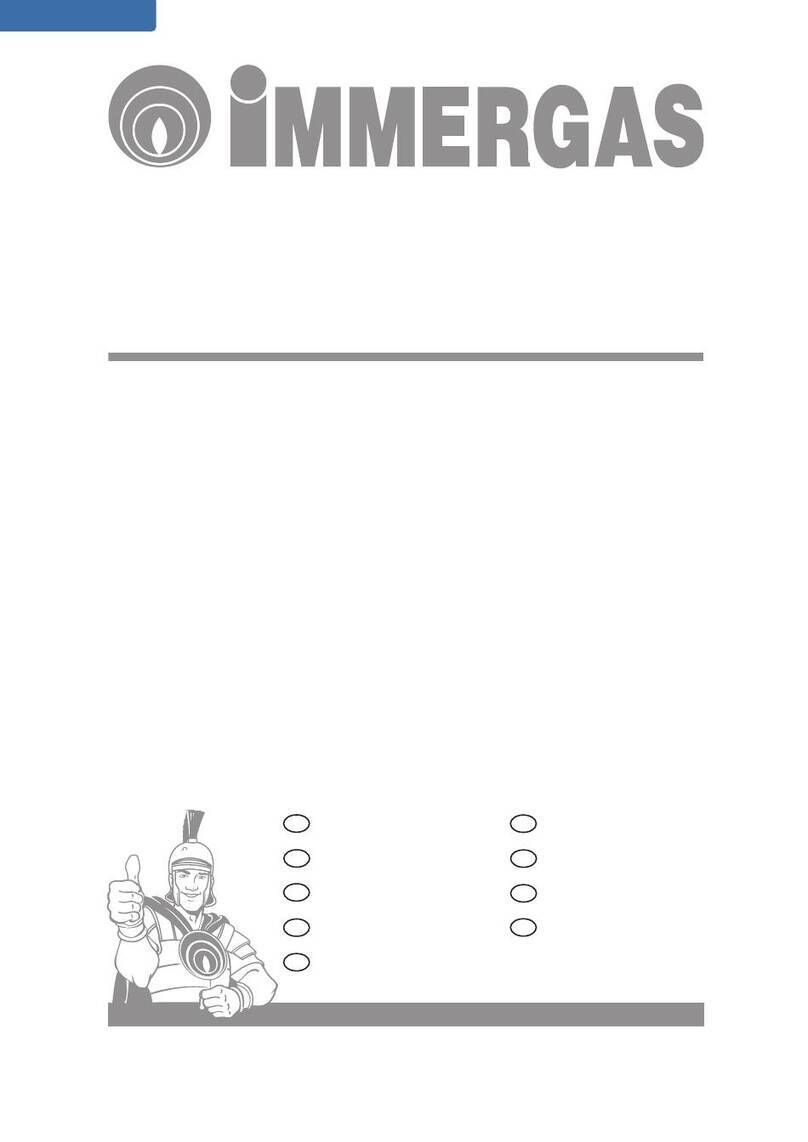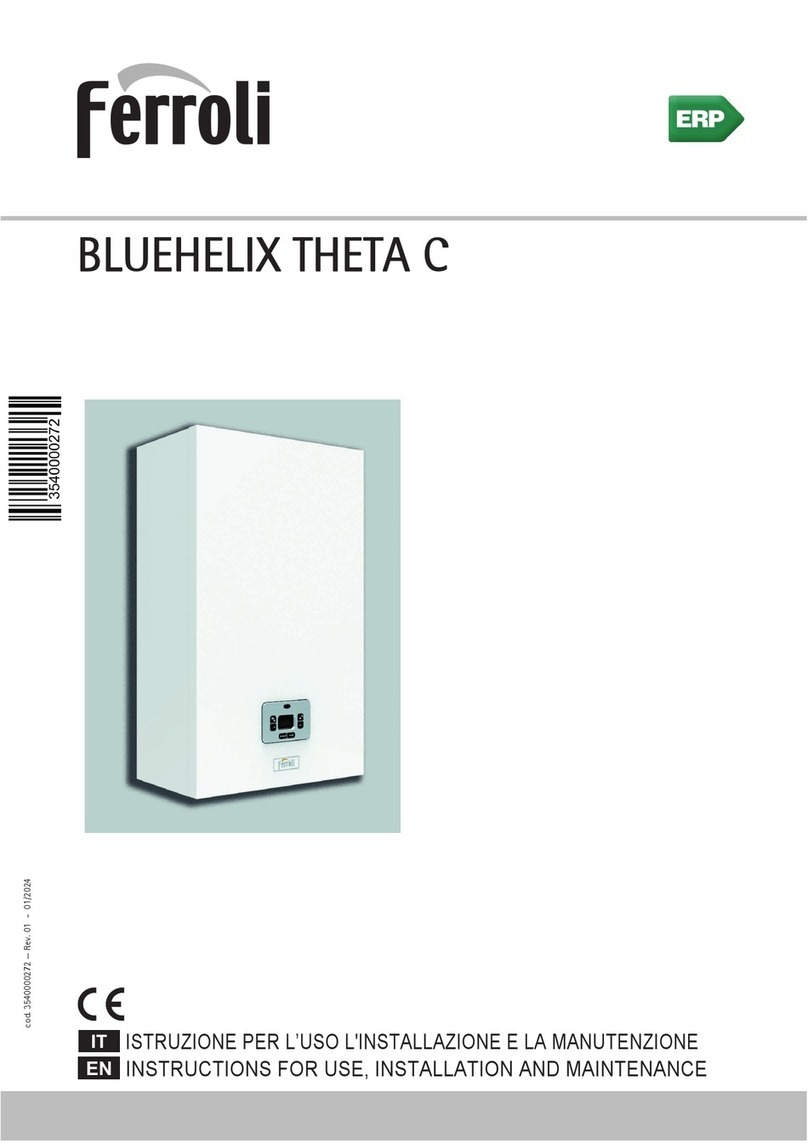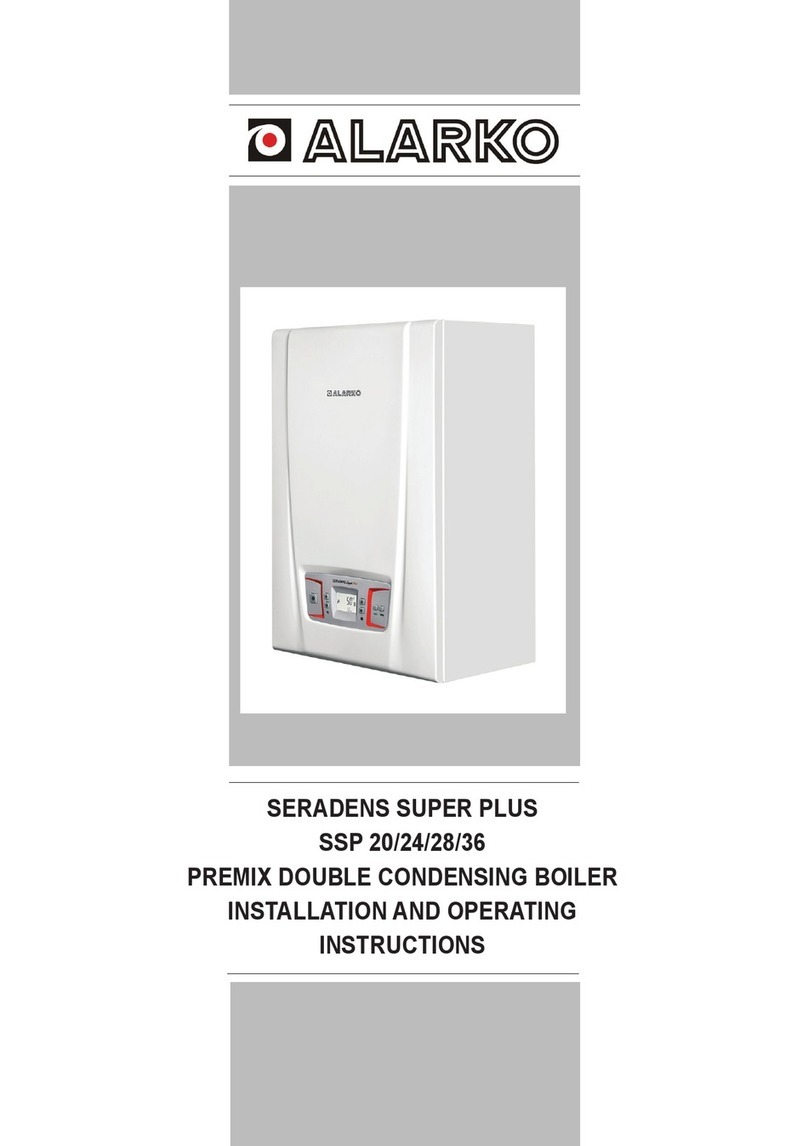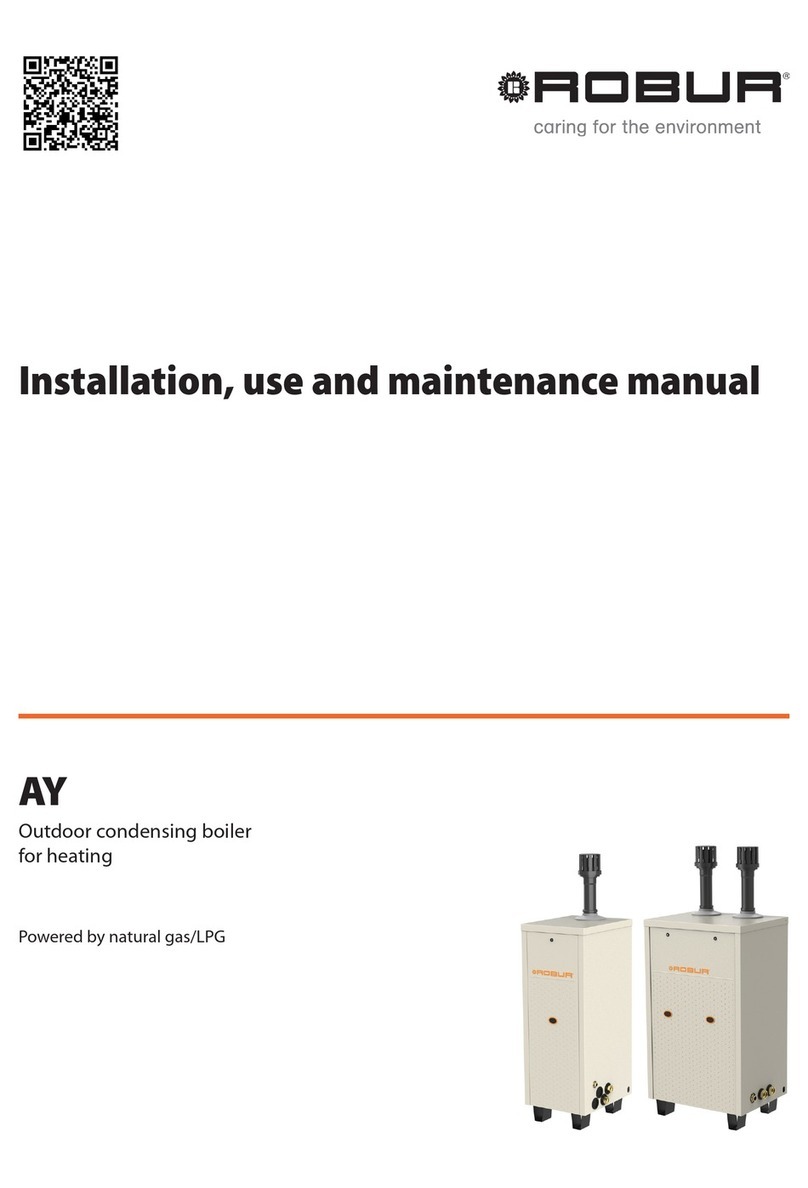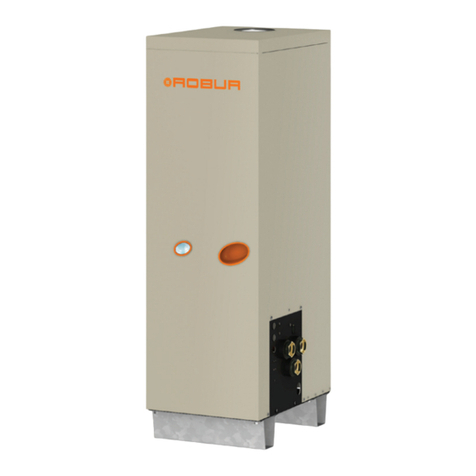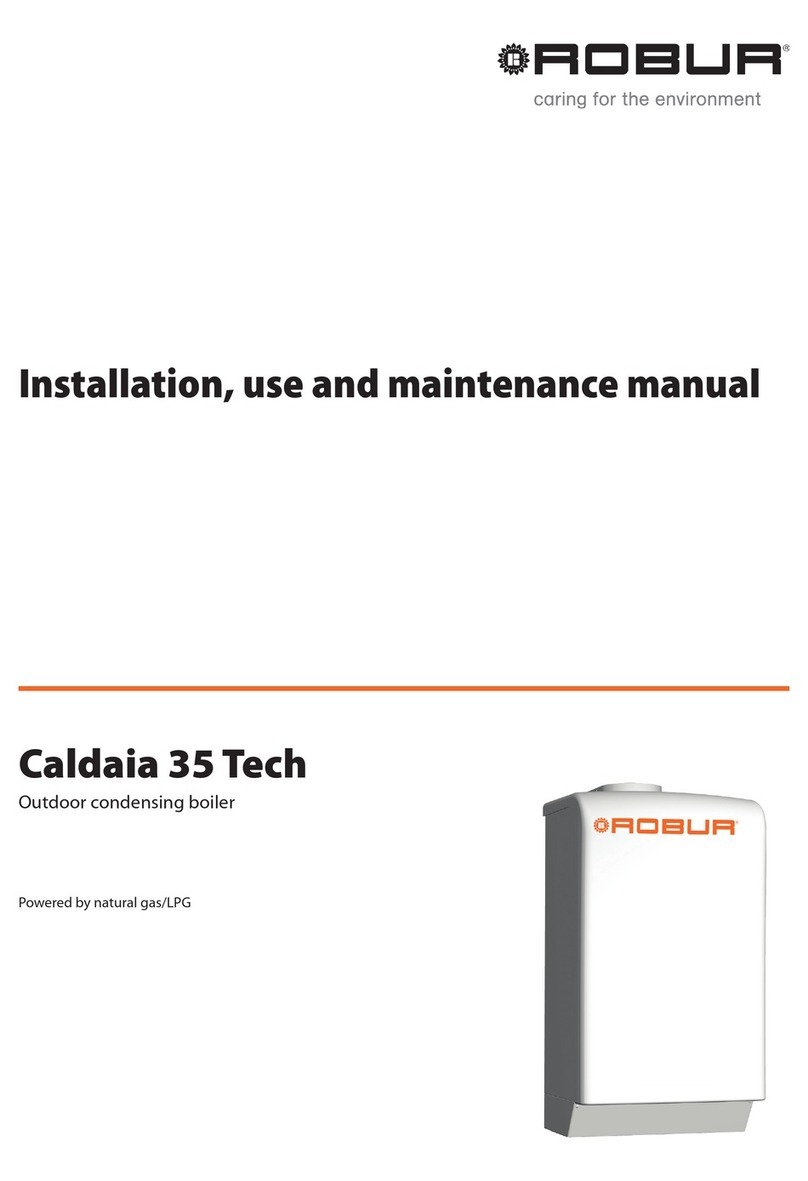
Heating engineer
20
3
For the calculation of the total water content to be
loaded in the system it is necessary to add the water
content of the boiler (Table 1.1
p.13
) and of the distri-
bution terminals to the water content in the pipes.
In order to ensure correct operation of the unit and avoid
freezing of the water during the winter periods (with
possible damage to the unit and the system), it is nec-
essary to add antifreeze glycol to the water in a quantity
proportional to the minimum winter temperatures of
the installation site (see Table 3.1
p.19
).
Connect the boiler safety drains (heating circuit safety
valve) to a drain funnel. The manufacturer is not respon-
sible for any damage due to the opening of the safety
valve in case of overpressure of the system.
Connect the boiler safety drains (heating circuit safety
valve) to a drain funnel. The manufacturer is not respon-
sible for any damage due to the opening of the safety
valve in case of overpressure of the system.
3.3.2 System lling
Proceed with the lling of the system as follows.
▶
Slightly loosen the cap of the jolly valve placed on the top of
the condensing block (Figure 3.3
p. 20
) to release the air
from the top of the boiler.
▶
Check that the air vent valves in the system are not blocked.
▶
Connect a rubber hose to the drain tap 2.
▶
Open the drain tap 2 counterclockwise.
▶
Open the system lling valve (to be provided on the system)
and let out all the air.
▶
Bring the hydraulic system under pressure, making sure that
the water pressure indicated by the pressure gauge is not
less than 1,5 bar.
▶
To facilitate the venting of the system, it is suggested to
activate the water circulation pump several times with the
boiler o, so that the air can be purged by the vent valves
located on the boiler and on the system. To start the circu-
lation pump only, with the boiler electrically powered, press
the key to turn on the boiler and after a few seconds
turn o the boiler. The circulation pump will remain in oper-
ation for a few minutes. Repeat the operation several times
until the pressure of the circuit remains unchanged.
▶
After the operation, close the lling tap.
Figure3.3System lling
1 Cap of the jolly valve
2 Tap
2
1
3.3.2.1 System water characteristics
Responsibility of the user/operator/installer
The installer, operator and user must assure system wa-
ter quality (Table 3.2
p.20
). Failure to comply with the
manufacturer's guidelines may aect operation, integri-
ty and life of the appliance, voiding the warranty.
In order to avoid any scale or deposits on the primary
exchanger, the water in the system must be treated in ac-
cordance with the applicable standards. This treatment
is absolutely essential in cases where there are frequent
episodes of water supply or partial or total emptying of
the system.
The hardness of the lling and top-up water brings a certain
amount of calcium into the system. This is attached to the hot
parts including the heat exchanger, thus creating pressure loss-
es and thermal insulation on the active parts. This can lead to
damage.
If the lling and top-up water of the system is outside the values
indicated below, it must be softened. Additives may also be add-
ed to keep the calcium in solution. Hardness should be checked
regularly and recorded.
If the above limits are exceeded, a water chemical treatment
must be carried out.
The choice of the type of treatment must be made according to
the characteristics of the water to be treated, the type of plant
and the limits of purity required.
Adhere to the chemical-physical parameters in Table 3.2
p.20
and the regulations on water treatment for residential and in-
dustrial heating systems.
Table3.2Chemical and physical parameters of water
Acidity 7 < pH < 8,5
Conductivity < 400 μS/cm (at 25°C)
Chlorides < 125 mg/l
Iron < 0,5 mg/l
Copper < 0,1 mg/l
3.3.3 Condensate drain siphon lling
When switching on for the rst time, the condensate siphon
must be lled to prevent the combustion gases from backow-
ing through the siphon.
It is advisable, after the rst few months of operation of the ap-
pliance, to clean the siphon, which collects also any deposits re-
sulting from the rst passage of the condensate inside the com-
ponents of the boiler. These deposits could cause the siphon
itself to malfunction.
For charging the siphon proceed as follows (Figure 3.4
p.21
):
1. Unscrew screw P, remove the siphon and ll it with water to
the top point T.
2. Replace the siphon and fasten it with the screw P.
3. Connect the specically designed exible condensate drain
hose to a drainage system.





















